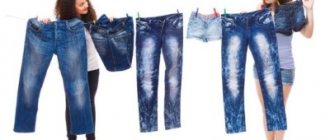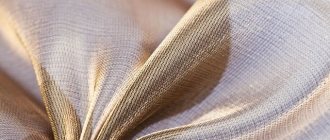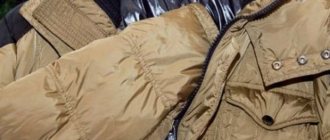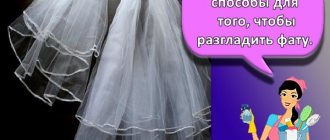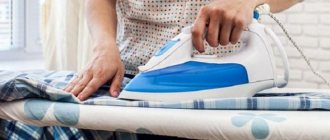Window decoration adds a special coziness to any room. In most cases, this is thin tulle, which is an airy, weightless fabric, which is often framed with thicker curtains or curtains. However, like any thing, tulle requires special care, being a delicate material. Sometimes one awkward movement is enough, and the textile product will be completely damaged. This is especially true for washing and ironing.
Depending on the type of fabric, care conditions may vary. We invite you to familiarize yourself with all the nuances of careful operation of curtains, and we will also tell you how to starch curtains, properly wash and quickly iron tulle even without an iron
How to iron tulle from different materials
Before ironing tulle, you need to clean the soleplate of the iron. Scorches and dirt must be removed so as not to spoil the delicate material. Before ironing, be sure to read the label to take into account the recommendations and properties of the fabric.
In this example (polyester). Ironing is allowed at temperatures up to 100 - 110 °C
Organza
Since the material is woven from very fine fibers, it must be handled with extreme care. There are several ways to carefully iron organza tulle:
- Steam treatment. The easiest and fastest way is to use a steam generator or the steam function on an iron. You need to hang the tulle on the cornice, and then walk along the entire section 1-2 times.
- Iron. The heating mode is selected depending on the composition of the organza. Iron semi-damp curtains from the wrong side through gauze.
- Hanging on a curtain rod immediately after washing. If the fabric does not straighten out, then moisten the folds and creases with water from a spray bottle, straighten them with your hands and leave to dry.
Advice! Organza made from natural silk should not be sprayed with water, as after drying, streaks remain on the fabric.
Capron
The fabric is made from polyamide fibers obtained from petroleum. It is not recommended to iron nylon tulle, as the material melts easily.
If a process is necessary, it is important to do it correctly:
- The nylon should be smoothed by barely touching it, or better yet, through a thin cotton fabric.
- You should not make smoothing movements to avoid stretching the fabric. The iron must be moved from place to place.
- Nylon should not be moistened during ironing or treated with a steam generator, as the fabric will stretch and become covered with waves.
Linen and cotton
Natural fabrics wrinkle easily, so even during washing you need to take care that the material does not deform. To do this, use the delicate mode and turn off the spin cycle. As a last resort, use the lowest speed.
It is best to hang cotton tulle to allow water to drain, and then attach it to the cornice and carefully straighten it out. When the canvas dries (it will take about 1 day), it will look freshly ironed.
If you cannot do without an iron, then you need to iron cotton tulle at 90-120 °C from the wrong side. For severe bruises, iron using a damp cloth.
Linen tulle is ironed at high temperatures, having previously been under-dried or moistened. As with cotton materials, they can be hung wet for a natural draw.
Veil
The delicate gauze-like fabric can be made from silk, cotton or even wool. But today, synthetic material is more often used for curtains. It is recommended to iron it only after washing, since any spot that is invisible to the human eye will be strongly attached to the iron.
To reduce damage to delicate fabric, do not twist or wring during washing. As soon as the water has drained, the tulle should be hung on the cornice, carefully straightened and left to dry.
If you need to iron, this can be done with a steam generator or an iron heated to a temperature not exceeding 110 °C. To prevent the fabric from stretching, it must be ironed through a thin cotton fabric, moving the electrical appliance from place to place and avoiding movements back and forth.
Polyester
The fabric is extremely difficult to care for, so even delicate washing does not always save you from bruises. In addition, synthetics do not have the ability to level themselves, so hanging them wet will not help. It is recommended to iron curtains under-dried or dampened from the inside out through gauze.
Viscose
An artificial material, the raw material for which is wood. It is better to steam viscose by hanging it on a curtain rod. If vertical processing is not possible, then the tulle is ironed on a board at 120 °C. You should not spray with a spray bottle, as water marks will appear on the canvas, and the material itself will become wavy.
Use a steam generator
Wide and long curtains, for example, large tulle, are problematic to iron on a board. When moving material from one place to another, it will become quite wrinkled.
To prevent the curtain from lying crumpled on the floor, you can do without an iron. After washing, the curtain is immediately hung in its place and steamed with a steam generator. It will steam and smooth out all formed wrinkles on any fabric.
The exception is synthetic and thin materials.
Only natural fabrics can be ironed with a steam generator; hot steam will damage synthetics. Photo: dekoriko.ru
How to iron large fabric
You can cope with ironing a bulky curtain if you handle it in parts. The work will go quickly if you first smooth out the top part of the canvas and secure it to the cornice. After this, place the board in front of the window and continue ironing the rest of the canvas.
There is another way: as you iron it, wrap the tulle around a stick with a circular cross-section. The main thing is that it has a smooth surface, without chips.
Tricks for large canvases
When buying tulle, we imagine how impressive it will look on the window. At the same time, we don’t think much about how to take care of this “colossus” of such size. Washing is no problem, I threw it in the machine and chose the “hand” or “delicate” wash mode. In 20-30 minutes everything is ready. But when you imagine how much you will have to iron this “wet cloud”, any desire to even wash it disappears.
To quickly iron large tulle, you need to iron the top and then attach it to the cornice. The ironing board should be as close to the window as possible. When the top half is already hanging, iron the hanging wrinkled part. The method is quite fast, and the result is high quality.
A large curtain can be hung over a bathtub filled with hot water. Steaming time is about half an hour. Then straighten it with your hands, hang it, and let it dry.
Types of tulle that do not require ironing
There are types of curtains that do not need ironing, or it is required extremely rarely. In this regard, the most convenient materials are those with a header effect. In addition to them, there are other types of curtains that do not need to be ironed:
- Synthetics. The fabrics are resistant to wrinkles, and after washing they can be immediately hung on the window.
- Cotton materials. The fibers are well saturated with moisture, so if you don’t wring out the tulle, but hang it up to drain, then they will straighten themselves without wrinkles.
- Linen fabrics. They are treated the same as with cotton tulle: they are not wrung out, they are hung wet. If wrinkles have formed, they should be sprinkled with water, smoothed out with your hands and not moved until dry.
Remember
- Study the shortcut. Do not neglect the instructions for a particular material; read the instructions on the label before washing and ironing. Perhaps the material should not be ironed at all.
- Do not iron at high temperatures . The maximum iron temperature is not higher than 150 °C.
- Do not wring out the tulle in the machine . Then you can hang the curtains on the cornice - they will straighten out under their own weight.
- Soften the material . To do this, rinse the curtains in a saline solution.
- Iron curtains while damp . If they are dry, first moisten them with your hand or a spray bottle to speed up smoothing.
The video shows ways to iron curtains after washing:
Useful tips and care recommendations
Tulle is a delicate product that requires a special approach. Curtains will not have to be ironed (or it will be easier to do so) if during washing:
- Avoid twisting and hard friction.
- Washable at temperatures up to 40°C.
- use liquid tulle products.
However, tulle still has to be smoothed: some types more often than others. You can return the product to a presentable appearance with minimal effort if you follow the recommendations:
- Study the features of care, paying attention to the prohibiting icons.
- To prevent the fabric from deforming, iron slowly, without stopping the iron for long periods in one place.
- It is more convenient to iron large tulles folded in several layers, avoiding folds. After hanging, they are moistened and smoothed with palms.
Technical alternative
In order not to use an iron, without excluding the use of technical means, you can “cheat” a little. There are similar devices that work differently. These are steamers, steam generators and similar household appliances.
Steamer
This is the name of an electrical device that allows you to produce steam from water. The working fluid is fed into the steam chamber in portions, then gets onto the clothes. They can be vertical, universal in design or manual. The disadvantage of a steamer is that it cannot completely replace an iron - it will only straighten out wrinkles.
Steam generator
The principle of operation of a steam generator is similar to a steamer, differing from it only in performance. The significant dimensions and weight of the device do not allow you to take it with you on a trip. More often these are stationary units, sometimes they are used in professional studios or shops.
How to iron tulle without an iron?
It happens that it is not possible to use an electrical appliance, but you need to hang tulle. In this case, several ways will help:
- If the bruises are not severe, they can be smoothed out with wet palms.
- Hang the wet tulle on the cornice, straighten it, and leave to dry.
- Hang the tulle in a bathtub filled with hot water and leave until it straightens.
- Fill a glass bottle or other container with hot water and lay the tulle on a flat surface. Smoothly move the container over the fabric, ironing out the folds.
If bruises are discovered after hanging the tulle, it’s not a problem. You can deal with folds without removing the curtain from the curtain rod:
- If the tulle is still damp, then you need to let it hang, then iron the unevenness, turning on the steam function, or use a steam generator.
- Boil the kettle, and while the steam is flowing, direct the stream to the folds.
- Spray the bruises with a smoothing agent (mix equal parts vinegar, water, fabric softener) and leave to dry.
Despite the complexity of the work, it can be handled. Studying the composition of the fabric and knowing the nuances of caring for it will help you find a suitable way to smooth out tulle without much effort.
Features of working with vertical type devices
The main advantages of a vertical steamer are the ability to iron clothes while hanging and the absence of direct contact with the item. The product is placed on a hanger (sometimes it comes with the device), after which you just need to move the nozzle at a certain distance from the surface of the object. At the same time, the degree of wear of textiles is reduced, the processing is very delicate and effective. After just a few minutes, all wrinkles are smoothed out, germs are destroyed, stains are eliminated.
It is worth considering that in cases of heavy contamination, the device will have to help. Dirt or grease cannot simply evaporate. In some cases, at the initial stage of work, not the most aesthetic stains will appear, there is no need to despair, you just need to work more actively with the steamer. When treating greasy stains, the substance may melt and come to the surface; you just need to remove it with a clean cloth and continue working until the perfect result.
When using a vertical steamer, there are a few things to consider.
- Do not add detergents to the tank unless recommended in the instructions.
- For cheap models, it is necessary to use the purest possible drinking water, otherwise streaks may appear. High-quality and expensive models can also work on tap water.
- The power of the device must correspond to the quality and density of the fabric. Don't try to get quick results by increasing the steam supply.
- You should not send new curtains to the wash; it is better to treat them with a steamer. This will eliminate all specific odors and smooth the surface of the products.
All of the above points apply equally to both floor-standing and hand-held appliances, the only difference is in their power.


